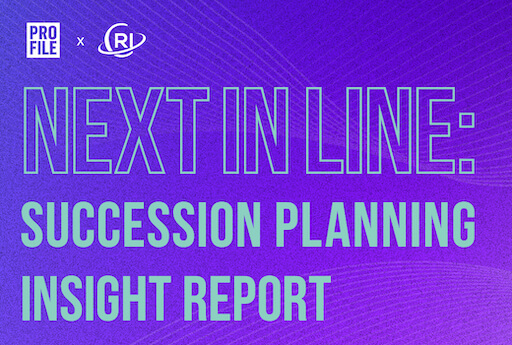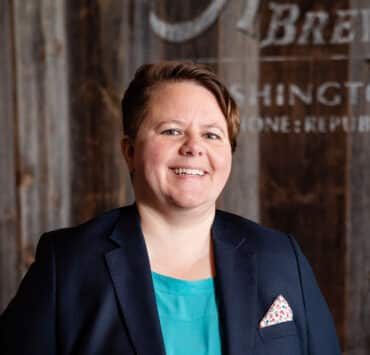|
Getting your Trinity Audio player ready...
|
It’s been over two years since the largest racial justice movement in a generation, when companies big and small—Google included—made unprecedented commitments to do better by communities of color both inside and outside their organizations. As a Black woman, and someone who has advocated for diversity and equity for much of my career, that was an incredibly encouraging and promising shift to see. The momentum was palpable, and I believe it still is today, but as we continue to take action to create more belonging in our workplaces, we have to keep asking what more can be achieved and how we can evolve our diversity, equity, and inclusion (DEI) work to keep pushing for progress.
As leaders, we know this work is never done. Inclusivity and representation must be worked on every single day, and through more creative ways beyond traditional HR. The first step every organization must take is collecting workforce data. Without a clear understanding of demographics, it’s impossible to understand and address the problems where they actually are, instead of where individual biases might lead us to believe they are.
In 2014, Google was one of the first large tech companies to publicly release an annual diversity report showing gender and racial breakdowns across roles and leadership levels. For nearly a decade since, this transparency has helped show us what’s working and where we need to still do better. It’s also a critical contribution to creating systemic, industry-wide solutions—if we, as a tech industry, can be more transparent and work collectively to help improve workplace diversity, we can certainly achieve more too.
“There is always more to be done and more growth to be had because the DEI space is constantly expanding.”
Melonie Parker
Organizations must also recognize and lift up their employee resource groups (ERGs). ERGs have long been woven into our cultural fabric at Google. They are critical for not only fostering a community for employees who share interests, backgrounds, or experiences but also cultivating mentorship and career development. Today, we have more than sixteen distinct ERGs representing Googlers who are Black, Hispanic, AAPI, LGBTQ+, veterans, and more. They are a direct and critical means of advising and advocating for positive change in the workplace to leadership, and their influence can generate meaningful cultural change that then flows down from the top of the company—a powerful result.
As we’ve built our DEI program over the years, we’ve realized it has to encompass all aspects of our work andworkplace. That meant evaluating our hiring and employee development, our leadership strategies, our philanthropic efforts, our external partnerships, and our products and services—all through a DEI lens.
By broadening to this more holistic approach, we’ve improved representation at all levels of Google, including Black representation in leadership by nearly 57 percent year-over-year. We also now evaluate executives on their success on DEI metrics, a new and significant adjustment to our review process. And we’ve found that teams with diverse backgrounds build with more user experiences in mind, thereby enabling them to create products that work better for the people actually using them.
Google’s Product Inclusion and Equity team, for example, works across our company and with historically marginalized communities to make sure our design and development processes are inclusive and representative of the world Google wants to serve. This work made a huge difference in our recent launch of Real Tone, a breakthrough camera technology for the Pixel 6 that accurately displays the vast spectrum of skin tones.
It’s examples like these that make me often wonder what potential innovations we missed out on over time as a society because the perspectives of women, people of color, and other historically marginalized groups weren’t considered and because those individuals weren’t given the same access to development and capital opportunities. I believe that as business leaders, we have an opportunity to reverse that loss not just at Google or in tech but across all industries. Achieving DEI cannot be done in a silo—we bring all of us up, or none of us.
“Inclusivity and representation must be worked on every single day, and through more creative ways beyond traditional HR.”
Melonie Parker
Since we made our Racial Equity Commitments in 2020, we’ve also looked at our philanthropic and community partnerships and how those could improve the pathways of Black leaders and other underrepresented groups into the tech industry. Last year, we committed $50 million to advance tech skill and career opportunities at HBCUs (historically Black colleges and universities). It’s an ongoing partnership that we hope will help elevate future generations of Black tech leaders. We also expanded our Black Founders Fund, which provides promising Black-led start-ups with non-dilutive cash grants to help take them to the next level and work to close the venture capital funding gap for people of color (Black founders received only 1.2 percent of all VC funding in 2021). Helping to bring others along and find their own success is a responsibility we choose to bear, and encourage others to adopt too.
But to keep pushing for progress, we must go beyond inclusion and focus on building belonging. The workplace, technology, and our world cannot feel like borrowed space for historically marginalized groups—we need to build a world where everyone feels like they belong.
At Google, we’re sharing our journey in building belonging with the hope that others may be able to learn from our guidelines and strategies to grow their own DEI programs. It’s an evolution of our ongoing DEI work, and one that I believe has contributed, in part, to significant improvements in areas like retention and representation for Black women and other underrepresented groups at Google. That said, there is always more to be done and more growth to be had because the DEI space is constantly expanding, and leaders must be able to learn from shortcomings, adapt, iterate, and, most importantly, keep the momentum going.
The views expressed in this article are those of the author and do not necessarily reflect the position of Profile or Guerrero Media.
As Google’s chief diversity officer, Melonie Parker is responsible for advancing Google’s employee engagement strategy across diversity, equity, and inclusion. She is an advocate for change and a passionate thought leader whose mission is to help make Google more reflective of the world around us.
Prior to Google, Melonie served as the vice president of human resources and communications at Sandia National Laboratories, where she was responsible for the leadership and Labs-wide management of human resources, health, benefits, and employee services. She also worked at Lockheed Martin for over seventeen years in a variety of business areas, locations, and progressive leadership roles. Melonie received a BA in mass communications from Hampton University and an MA in human resources from Villanova University.















